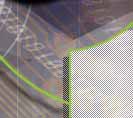
|
|||||
Curricula
Action Toolkit

a project of Media Working Group
Curricula
Curriculum Goal
Use of the documentary film, The Gender Chip Project, to increase the interest of girls and young women in science, technology, engineering and mathematics fields as professions.
The Gender Chip Project is a unique partnership of women in science, educators, science organizations and media producers. The multimedia project is designed to provide role models and encouragement for girls and young adults who wish to enter science, technology engineering and mathematics (STEM) careers; and to raise public awareness about the continuing need to develop education and career opportunities for young women who dream of taking one of these life paths. These resources will help girls and young women identify and articulate possible gender-based obstacles they might meet on the way and it will provide the tools for navigating them. There are very few films and other media that address the topic of girls and STEM as well as the unique problems encountered on academic paths to these careers. |
||
Curriculum Standards
The Gender Chip curriculum was constructed within the framework of the National Science Education Standards issued by the National Research Council in 1996-"the comprehensive vision for the improvement of science teaching and learning" (NSTA, 2005) designed to connect the critical junctures of content, process, technology and capacity building, within the context of a "scientifically literate populace". The curriculum promotes inquiry-based instruction, professional development, sound assessment practices and an in-depth understanding of subject matter, in addition to addressing knowledge gaps about female participation in the construction and implementation of the sciences.
Introduction
This curriculum has been designed to meet the needs of many different viewers – from school groups, to non-profits to college students. The common goal amongst these groups is the encouragement of young women in pursuit of their vision and dreams. Our hope is that we are offering a curriculum that respects the diversity and experience of all the participants and learners and one that may be engaged with on many levels.
Rather than take the standard approach of providing a series of lessons based on ages and types of groups. We have instead found ourselves revisiting the questions the movie raises for our own lives, work and thinking. As a result of these shared experiences, we found ourselves enmeshed in discussions that could have been entered into by a fifth grader wondering what classes to take in middle school or a high school student struggling with checking the appropriate “major” box on college applications, or with young college women looking at career choices. We realized that these are conversations and experiences that we may have, and we may revisit them many times over the course of our lives. So rather than prescribe a one-time set of lessons we hope we have created a series of experiences, tools and resources that will allow for the conversations we need to have to help young women grow into their own vision of what might be.
In order to do this, we have designed a program that includes individual lessons that can stand-alone or be combined to create units or dovetail with other units that meet certain educational goals. We begin with a series of objectives and a series of discussions surrounding the decisive moments in young women’s pursuit of science. Next, we have provided several learning experiences that may be used as they are written or function as the brainstorming for teachers as they create their own lessons. Realizing that many of us would like to mentor and support young women, but often don't know where to begin, we have included a formative assessment tool. Finally, we have included a list of the references we use in our work to get you started or further your work with young women.
![]() Download
a PDF of the Curricula (556k)
Download
a PDF of the Curricula (556k)
